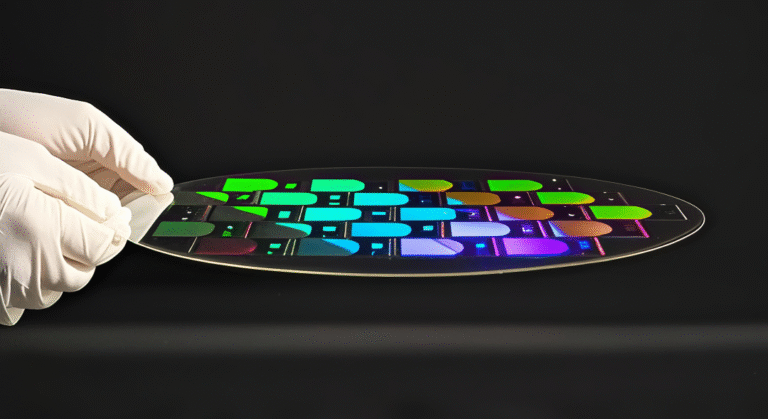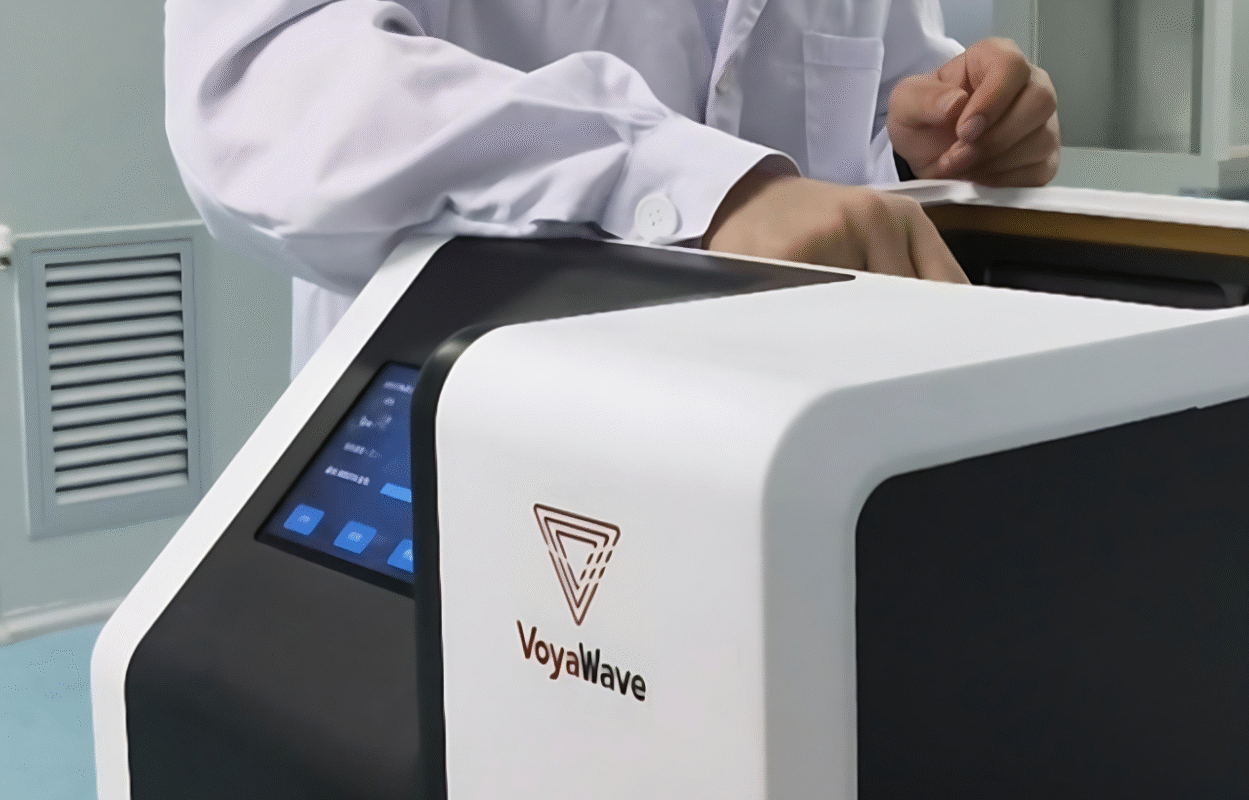OptoPrism Coupler Advances AR Waveguide Technology
With the rapid development of augmented reality (AR) technology, optical waveguides, as core display devices, are driving AR devices to evolve towards lighter, thinner, and higher-quality images.
The OptoPrism coupler independently developed by VoyaWave Optics is a high-precision refractive index, film thickness, and waveguide loss measurement device that plays an important role in the research and development, performance optimization, and mass production quality control of AR optical waveguides, providing key support for breakthroughs in optical waveguide technology.
Key Challenges in AR Optical Waveguide Manufacturing
Optical waveguide technology uses the principle of total reflection of light to construct an optical channel that integrates virtual and real in a transparent medium.
Currently, the mainstream optical waveguide technology routes are mainly divided into geometric optical waveguides, diffraction optical waveguides and metasurface optical waveguides.
In AR optical waveguide display technology, precise control of optical thin films is the core link that determines product performance.
Optical waveguide lenses achieve efficient coupling, conduction and emission of light through multi-layer thin films, and the accuracy of the coating process and the measurement accuracy of film parameters (refractive index, thickness) directly affect the imaging quality, light energy utilization and device reliability.
● In terms of optical performance, the rainbow effect (color separation caused by the difference in diffraction angles of light of different wavelengths) and light leakage (affecting display privacy and experience) have existed for a long time, and the light efficiency attenuation (multi-level conduction loss leads to insufficient brightness) and uniformity problems (micromirror array or grating period deviation causes uneven brightness) need to be overcome urgently. At the same time, problems such as material uniformity and process stability in mass production make it difficult to improve the yield.
● In terms of testing and verification, the demand for high-precision measurement of thin film refractive index and thickness far exceeds the capabilities of traditional methods, and complex structures such as metasurfaces require multi-wavelength and multi-angle coupling tests to capture nanoscale features, which places strict requirements on the compatibility and efficiency of detection equipment.
Technical solutions for prism couplers
● Refractive index
The refractive index is a key parameter that determines the propagation behavior of light in the waveguide layer. Accurate measurement of the refractive index can ensure efficient total reflection transmission of light in the waveguide layer and avoid leakage and loss of light energy. The OptoPrism prism coupler can measure the refractive index in the range of 1.0-3.35 with an accuracy of ±0.0005 and a resolution of ±0.0003.
● Birefringence
The birefringence can make light with different polarization directions have different refractive indices, realize the control and modulation of the polarization state of light, and is used for operations such as decomposition, separation or rotation of polarized light. Its precise characterization can ensure the uniform transmission and imaging consistency of multi-polarization state optical signals. The OptoPrism prism coupler supports TE/TM mode birefringence measurement to meet the needs of automotive and industrial applications.
● Film thickness
Slight deviations in film thickness can seriously affect light coupling efficiency and waveguide modes, and thus image brightness and clarity. The OptoPrism prism coupler can measure film thickness in the range of 0.4-150 μm with an accuracy of ±(0.5%+50Å).
● Film refractive index & thickness
The coordinated characterization of film refractive index and thickness is the key to building a customized optical film system, precisely controlling the effective refractive index and mode distribution of the optical waveguide. The OptoPrism prism coupler supports simultaneous measurement of film refractive index and thickness, providing high-precision data assurance for multiple scenarios such as the expansion of the eye movement range of AR optical waveguides and optimization of coupling/extraction structures, and adapting to the performance iteration requirements of complex optical systems.
● Waveguide transmission loss
Waveguide transmission loss directly restricts the mode field confinement capability and light energy transmission efficiency of AR optical waveguides. Excessive values can lead to display brightness attenuation, reduced eye movement range, and degradation of imaging uniformity. The OptoPrism prism coupler can measure waveguide loss in the range of 0.1-15dB/cm, providing loss traceability and process verification support for demanding scenarios such as AR near-eye display and automotive photonic devices.
● Thermo-optic coefficient
Test temperature changes will affect waveguide propagation characteristics, coupling efficiency reduction, dispersion shift and other performance, thereby degrading AR imaging resolution and color fidelity. The OptoPrism prism coupler integrates a temperature control station (room temperature - 200℃), which can measure the waveguide thermo-optic coefficient and provide accurate data support.
Optical film inspection is a key link in the industrialization of AR optical waveguides. It is necessary to select an appropriate inspection solution based on material properties and structural complexity, and achieve full-process quality control from R&D to mass production through technical collaboration.
As the core tool for AR optical waveguide R&D and mass production, the OptoPrism coupler independently developed by VoyaWave Optics are becoming the key link between optical innovation and industrial upgrading through high-precision measurement, automated testing and multi-scenario compatibility, promoting the industry to break through technical bottlenecks, accelerating the commercialization of AR equipment, and jointly building a global industrial chain support system.







